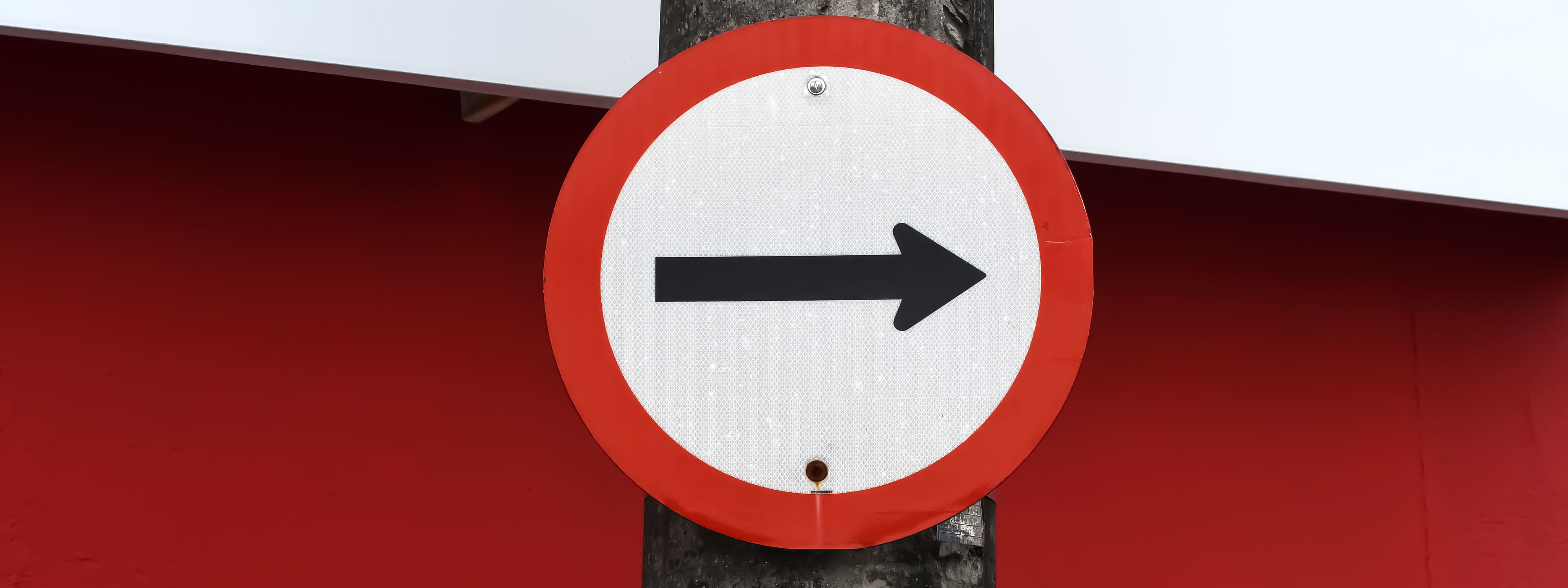
New Details on the Section 30D Clean Vehicle Tax Credit's Foreign Entity of Concern Restrictions
14 min read
On December 1, 2023, the Department of the Treasury ("Treasury"), Internal Revenue Service ("IRS"), and Department of Energy ("DOE") issued the proposed rules governing the Foreign Entity of Concern ("FEOC") restrictions for clean vehicle subsidies in the amended section 30D clean vehicle tax credit, as amended by the Inflation Reduction Act of 2022 ("IRA"). Under the IRA, a new clean vehicle placed into service after December 31, 2023, will not qualify for section 30D credits if the vehicle's battery or battery components were manufactured or assembled by an FEOC. The FEOC restrictions will then expand to exclude a vehicle from the credit if the vehicle's battery cells contain any critical minerals that are extracted, processed or recycled by an FEOC after December 31, 2024.
Overview of the new section 30D FEOC restrictions
The IRA restructured the US new clean vehicle subsidy under Internal Revenue Code section 30D, removing previous volume caps on qualifying vehicle sales but imposing a variety of new local content, price and income-based restrictions. Section 30D, as amended, provides a credit of up to $7,500 per qualifying new clean vehicle purchased, consisting of $3,750 that is conditional on the subject vehicle meeting certain critical minerals local content requirements, and $3,750 that is conditional on the subject vehicle meeting certain battery components local content requirements. On April 17, 2023, Treasury and the IRS published the Notice of Proposed Rulemaking for the Section 30D New Clean Vehicle Credit in the Federal Register, implementing these critical mineral and battery component requirements and the law's other new procedures.1
Beyond the local content rules explained in the April proposed rules, the IRA also disqualifies clean vehicles from coverage under the section 30D tax credit if any of their batteries minerals or components originate from FEOCs.2 An FEOC includes, among other things, any foreign entity that is "owned by, controlled by, or subject to the jurisdiction or direction of a government of a foreign country that is a covered nation (i.e., China, Russian, Iran or North Korea3)." For the Battery Component Requirement, tax credits will be prohibited if the battery was manufactured or assembled by an FEOC. This prohibition will be effective for vehicles placed into service after December 31, 2023. For the Critical Minerals Requirement, the credit will be prohibited if the battery contains any critical minerals that are "extracted, processed, or recycled" by a "foreign entity of concern." This prohibition would take effect after December 31, 2024. The April 17 proposed rules, however, did not include details on the FEOC restrictions. Instead, Treasury said it would "issue guidance with respect to section 30D(d)(7) at a later date." The absence of detailed guidance on the FEOC restrictions – including a full definition of "FEOC," and how automotive manufacturers must demonstrate compliance – has, until now, created significant uncertainty for companies planning investments in the electric vehicle supply chain.
Interpreting the IRA's FEOC restrictions
The IRA and the 2021 Infrastructure Investment and Jobs Act ("IIJA"- the law on which the IRA's FEOC restrictions is based4) did not provide sufficient detail for taxpayers to apply the FEOC restrictions to specific projects. These laws describe an FEOC generally as a foreign entity that is owned by, controlled by or subject to the jurisdiction or direction of a government of a foreign country that is a covered nation (i.e., China, Russia, Iran or North Korea) or a foreign entity that is subject to various listed US sanctions and export control designations.5 The definition relies on the terms "foreign entity," "owned by, controlled by, or subject to the direction," "subject to the jurisdiction" and "government of a foreign country" for interpreting what entities it covers. The IIJA, however, did not define these terms. The IIJA, in effect, delegated defining these terms to the executive branch. Accordingly, how the executive branch applies these terms to complex corporate structures, including joint ventures, indirect ownership and foreign subsidiaries of entities based in covered nations is critical to the implementation of section 30D. The December proposed rules from Treasury and the DOE fill the gaps by providing both a full definition of FEOC and directions for how companies should certify compliance with the FEOC restrictions to the IRS.
DOE's proposed definition of FEOC
The DOE's proposed interpretive rules clarify the FEOC restrictions by establishing new definitions for "government of a foreign country", "foreign entity", "subject to the jurisdiction", and "owned by, controlled by, or subject to the direction."6 This proposed definition would apply both to the section 30D credits and to the IIJA section 40207 battery processing and manufacturing grant programs.
Key definitions in the proposed rules
- "Foreign entity" means one or more of the following:
- (i) a government of a foreign country;
- (ii) a natural person who is not a lawful permanent resident of the United States, citizen of the United States or any other protected individual;
- (iii) a partnership, association, corporation, organization or other combination of persons organized under the laws of or having its principal place of business in a foreign country; or
- (iv) an entity organized under the laws of the United States that is owned by, controlled by or subject to the direction of an entity that qualifies as a foreign entity under paragraphs (i) - (iii).
- "Subject to the jurisdiction" means either:
- (i) the foreign entity is incorporated or domiciled in, or has its principal place of business in, a covered nation; or
- (ii) with respect to the critical minerals, components or materials of a given battery, the foreign entity engages in the extraction, processing or recycling of such critical minerals, the manufacturing or assembly of such components, or the processing of such materials, in a covered nation.
- "Owned by, controlled by or subject to the direction" means either:
- (i) 25% or more of the entity's board seats, voting rights or equity interest are cumulatively held by that other entity, whether directly or indirectly, via one or more intermediate entities; or
- (ii) with respect to the critical minerals, battery components or battery materials of a given battery, the entity has entered into a licensing arrangement or other contract with another entity (a contractor) that entitles that other entity to exercise effective control over the extraction, processing, recycling, manufacturing or assembly (collectively, "production") of the critical minerals, battery components or battery materials that would be attributed to the entity.
- "Government of a foreign country" includes the following:
- (i) a national or subnational government of a foreign country;
- (ii) an agency, department, or instrumentality of a national or subnational government of a foreign country;
- (iii) a dominant or ruling political party of a foreign country; or
- (iv) a current or former senior foreign political figure.
Assessing joint ventures in third countries
The electric vehicle battery and critical mineral industries are globally integrated, so the application of these rules to joint ventures located outside of covered nations will warrant close examination. Generally, a joint venture would be an FEOC if it is a "foreign entity" and is either "subject to the jurisdiction" of a covered nation government, or is "owned by, controlled by or subject to the direction of" the "government of a foreign country" that is a covered nation. Battery manufacturers and mineral processing and mining joint ventures formed outside of a covered nation, but that still involve those covered nations will have to carefully review their corporate structures to determine whether they meet the 25% cumulative ownership standard (or the contract standards) presented under the definition of "owned by, controlled by or subject to the direction." The DOE's clarifying notes lay out a formulaic process for assessing these criteria, which will require a careful fact-based review for each entity. Close examination becomes especially important in situations where a covered government is several tiers of minority corporate ownership away from the subject joint venture, in which case the DOE's formulas may attenuate the assessed level of control to below the required 25% threshold.
Other contents of the proposed rules
The DOE proposed rules include further elaboration on the meanings of these definitions and examples of how the government will assess controlling shares and controlling licensing arrangements. The DOE also discusses the reasoning behind its proposed definitions, given that other options were available. The document also includes several additional proposals for public feedback, including proposals for the DOE to use additional authorities under the IIJA to designate specific entities as FEOC regardless of the established FEOC definition and whether the DOE should add a voluntary pre-review process in which the DOE could offer advance rulings on FEOC compliance.
Request for public feedback
The DOE proposed rules are open for public comment until January 3, 2024. Interested stakeholders can submit comments to the DOE via the rulemaking docket on regulations.gov or by email. More details on the public feedback process can be found in the Federal Register notice.
Treasury's proposed rules for applying FEOC in section 30D
Treasury's proposed rules, Section 30D Excluded Entities, provide definitions and rules for qualified manufacturers to determine the compliance of a clean vehicle with the FEOC restrictions for the Section 30D tax credit.7 The Treasury's proposed rules will operate under the definition of FEOC provided by the DOE proposed rules, as discussed above. The proposed rules explain how manufacturers should determine FEOC compliance for battery components at the time of their manufacture and trace critical mineral supply chains to determine their FEOC compliance. The proposed rules also cover processes for documenting and certifying compliance at relevant levels of the supply chain, several transitional rules that give critical minerals suppliers additional flexibility, a regime for reviewing compliance and penalties for non-compliance.
Compliance documentation process
The general process for determining that a clean vehicle's battery is FEOC-compliant follows a three-step process, described below. The supply chain tracing process described in the proposed rules also treats battery cells separately from other battery components because the battery cells are the component that contains the applicable critical minerals. For battery components, these rules will enter effect on January 1, 2024 and for critical minerals and their associated constituent materials, the rules will enter effect on January 1, 2025.
- The manufacturer determines whether the relevant battery components and applicable critical minerals are FEOC-compliant, following the rules for FEOC-compliant battery components and applicable critical minerals.
- The manufacturer physically tracks the FEOC-compliant battery components and applicable critical minerals to the specific battery cells that are assembled from them, following the rules for FEOC-compliant battery cells. The proposed rules for this step of the process temporarily allow (until January 1, 2027) an allocation-based determination for applicable critical minerals for when manufacturers are unable to physically track the specific minerals or their associated constituent materials to the battery cell.
- The manufacturer tracks the battery cells and other battery components to the specific batteries, following the rules for FEOC-compliant batteries.
The Treasury proposed rules provide a transitional process for new clean vehicles placed into service between December 31, 2023, and January 1, 2025. This 2024 transition rule would allow manufacturers to bypass certain physical tracking requirements for batteries and battery cells while certifying FEOC compliance, expediting certification for the fast-approaching entry into force.
Upfront review and battery ledger
Starting in 2025, FEOC enforcement will switch to an upfront review system to strengthen compliance. Under this system, automotive companies will submit attestations, certifications and other documentation demonstrating FEOC-compliant battery production and procurement capacity. Treasury, with analytical support from DOE specialists, will review these submissions and produce a ledger tracking the number of compliant batteries that an automotive manufacturer has each year. Automakers will be able to receive credits for FEOC-compliant clean vehicles sold up to the number of FEOC-compliant batteries reported and recorded in their applicable compliant-battery ledger.
Non-traceable battery materials exception
Treasury also proposed a transition rule to allow certain "non-traceable battery materials" to bypass the FEOC restrictions until January 1, 2027. Neither the due diligence requirement nor the FEOC-compliance designation would apply to these materials before that time. Non-traceable battery materials are certain low-value materials that have diverse sourcing and comingle in the manufacturing process, making it difficult to identify their original source under current industry practices. Treasury and the DOE believe it is not currently feasible for manufacturers to trace and certify these materials. The proposed list of these materials includes applicable critical minerals that are contained in electrolyte salts, electrode binders and electrolyte additives, as well as potentially other low-value electrode active materials. In the proposed rules, Treasury has requested public input on whether it should include other materials and if this approach is the best option available. The proposed rules further suggest that Treasury is considering alternative approaches to handling this supply chain tracing challenge.
Penalties for non-compliance
Automakers that violate the rules may lose the ability to qualify for section 30D credits for the subject vehicle and potentially other vehicles as well. Under the proposed rules, the IRS may revoke qualification for section 30D credits from a manufacturer or from a specific vehicle class due to "fraud, intentional disregard, or gross negligence with respect to any requirements of section 30D and the regulations and guidance thereunder[.]" Manufacturers that lose access to the tax credits due to such actions would have to reapply for qualification. The rules also provide processes for correcting inadvertent errors.
Request for public feedback
The Treasury proposed rules are open for public comment until January 18, 2024. Treasury will consider timely feedback in developing the final rules. Stakeholders may also request that Treasury hold a public hearing on the proposed rules. More details on the public feedback process can be found in the Federal Register notice.
Updated revenue procedure
The IRS also issued an updated revenue procedure, Revenue Procedure 2023-38, for submitting information to the IRS on clean vehicles, previously owned clean vehicles, and commercial clean vehicles.8 The revenue procedure provides procedural information for how manufacturers of new clean vehicles should comply with the various reporting, certification and attestation requirements under the FEOC restrictions and Treasury proposed rules. This revenue procedure also consolidates the procedures for all three of the IRA's clean vehicle credits into one document (the other two being the section 45W credit for commercial clean vehicles and the section 25E previously owned clean vehicles credit, neither of which is subject to the FEOC restrictions).
Implementing the IRA's amended section 30D
The proposed rules provide important clarity for companies assessing how their projects can meet the strict standards of the section 30D clean vehicle tax credits and decide on making new investments. Incomplete sections of the proposed rules also demonstrate, however, that the administration is still grappling with how to balance the IRA's strict national security restrictions with the often-conflicting green energy adoption goals. The proposed rules invite public comments on several issues related to difficult-to-track minerals and rules evasion, which will require additional development and clarification before the government can completely implement the IRA's FEOC limits.
Both rules are in proposed form and the agencies are providing stakeholders an opportunity to provide feedback, creating a possibility that the agencies will make further changes before the rules are finalized. Despite this possibility for future changes, taxpayers may rely on these proposed rules for vehicles placed into service before the IRS and DOE issue the final regulations. Considering the imminence of the entry into force of the IRA's FEOC restrictions for batteries and battery components, these proposed rules will likely be the guidance on which taxpayers rely for now.
Treasury's IRA Implementation Agenda
Issuing these rules was part of Treasury's phase two plan for implementing the various tax code changes required by the IRA.9 Under phase two, which lasts from September to December 2023, Treasury still intends to issue guidance for the Section 45V Clean Hydrogen Production Tax Credit, the Section 40B Sustainable Aviation Fuel Credit, and the Section 45X Advanced Manufacturing Production Credit. Treasury recently issued new guidance for transferring the clean vehicle tax credits to dealers,10 the Section 45L New Energy Efficient Home Credit11 and updates to the energy credits under the Section 48 Investment Tax Credit (ITC).12 Beyond issuing these proposed rules, Treasury is also reviewing public comments submitted in response to the previously issued proposed rules and developing the relevant final rules. Treasury has not yet specified when it will issue final rules, including final versions of the April section 30D proposed rules.
1 "Section 30D New Clean Vehicle Credit," 88 FR 23370 (April 17, 2023); see also White & Cases discussion of the proposed rules, "US Treasury Department Publishes Proposed Guidance on Clean Vehicle Tax Credits."
2 As amended by section 13401(e) of the IRA, section 30D(e)(7) of the Internal Revenue Code.
3 The IIJA definition of "covered nation" cites section 4873(d)(2) of title 10 (renumbered from section 2533c(d)), which lists China, Russia, Iran and North Korea.
4 Infrastructure Investment and Jobs Act, Public Law 117–58, 117th Congress.
5 IIJA section 18741(a)(5)
6 "Interpretation of Foreign Entity of Concern," 88 FR 84082 (December 4, 2023) (issued by the DOE on December 1, 2023).
7 "Section 30D Excluded Entities," 88 FR 84098 (December 4, 2023) (issued by Treasury on December 1, 2023).
8 Revenue Procedure 2023-38.
9 Remarks by Assistant Secretary for Tax Policy Lily Batchelder on Phase Two of Implementation of the Inflation Reduction Act's Clean Energy Provisions, September 8, 2023.
10 "Transfer of Clean Vehicle Credits Under Section 25E and Section 30D," 88 FR 70310 (October 10, 2023).
11 "Section 45L New Energy Efficient Home Credit," Notice 2023-65 (September 27, 2023).
12 "Definition of Energy Property and Rules Applicable to the Energy Credit," 88 FR 82188 (November 22, 2023).
White & Case means the international legal practice comprising White & Case LLP, a New York State registered limited liability partnership, White & Case LLP, a limited liability partnership incorporated under English law and all other affiliated partnerships, companies and entities.
This article is prepared for the general information of interested persons. It is not, and does not attempt to be, comprehensive in nature. Due to the general nature of its content, it should not be regarded as legal advice.
© 2023 White & Case LLP




